Can access to clean water and proper sanitation really transform communities? The answer lies in understanding the critical role that water and sanitation engineering plays in improving public health and environmental quality.
To become an expert in this field, one must start with a solid educational foundation. According to Agoti Dennis, a WASH Engineer, having a relevant bachelor’s degree is an excellent starting point. Pursuing a degree in fields like civil or environmental engineering can pave the way for a career in clean water technology.
For those looking to specialize further, programs like the certificate in Water, Sanitation, and Hygiene (WASH) Engineering can provide advanced knowledge and skills.
Key Takeaways
- Obtain a relevant bachelor’s degree in a field like civil or environmental engineering.
- Pursue specialized programs or certifications in water and sanitation engineering.
- Gain practical experience in clean water technology and sanitation systems.
- Develop skills in community engagement and sustainability-based decision-making.
- Stay updated with the latest advancements in WASH engineering.
Introduction to Water and Sanitation Engineering
As the world grapples with water scarcity and pollution, water and sanitation engineering has emerged as a vital discipline. This field is crucial for ensuring that communities have access to clean water and proper sanitation facilities, which are fundamental to public health and environmental sustainability.
Definition and Importance
Water and sanitation engineering involves the design, construction, and management of systems that provide clean water and manage wastewater. The importance of this field cannot be overstated, as it directly impacts public health by reducing the risk of waterborne diseases and environmental sustainability by conserving water resources and preventing pollution. Effective wastewater treatment solutions are a critical component of this field, as they help protect water bodies and ensure that water is safe for various uses.
The American Society of Civil Engineers (ASCE) offers a Water Treatment Certificate Program that covers the latest technologies and planning aspects required for water treatment, highlighting the ongoing efforts to improve practices in this field.
Historical Context
The history of water and sanitation engineering dates back to ancient civilizations, where rudimentary systems were developed to supply water and manage waste. Over time, advancements in technology and engineering have led to the development of sophisticated systems that can handle the complex needs of modern communities. The evolution of environmental engineering services has played a significant role in this progress, enabling the creation of more efficient and sustainable water management practices.
| Period | Key Developments | Impact |
|---|---|---|
| Ancient Era | Rudimentary water supply and waste management systems | Basic public health improvements |
| Industrial Era | Advanced water treatment technologies | Significant reduction in waterborne diseases |
| Modern Era | Sustainable water management practices | Enhanced environmental sustainability |
Current Trends in the Field
Currently, water and sanitation engineering is witnessing a shift towards more sustainable and efficient practices. There is a growing emphasis on implementing technologies that not only provide clean water and manage wastewater effectively but also minimize environmental impact. For instance, the adoption of innovative environmental engineering services is becoming more prevalent, as these services help in designing systems that are both effective and sustainable.
Some of the current trends include the use of smart water management systems, innovations in wastewater treatment, and the development of sustainable sanitation solutions. These trends are expected to continue shaping the field, enabling water and sanitation engineers to address the complex challenges they face more effectively.
Key Responsibilities of Water and Sanitation Engineers
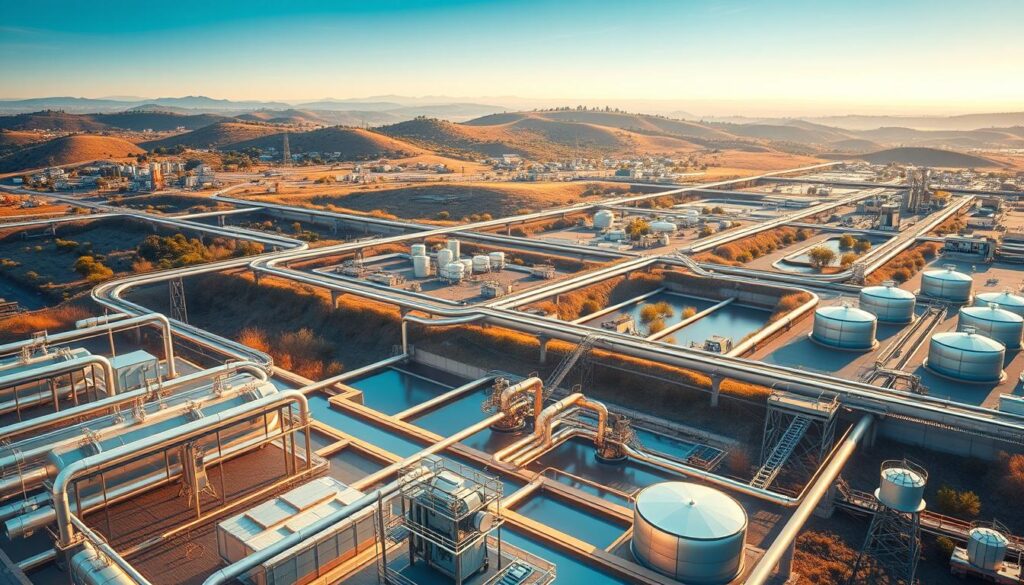
Ensuring the delivery of clean water and the safe disposal of wastewater are among the primary responsibilities of water and sanitation engineers. Their work is critical in preventing waterborne diseases and protecting the environment. Water and sanitation engineers are involved in a wide range of activities, from designing water supply systems to managing wastewater treatment processes.
Designing Water Supply Systems
Designing water supply systems is a complex task that involves planning, developing, and maintaining infrastructure to ensure a reliable and safe water supply. Water and sanitation engineers use advanced technologies and modeling techniques to design systems that meet the needs of communities. They must consider factors such as population growth, climate change, and existing infrastructure when designing these systems.
Key considerations in designing water supply systems include:
- Assessing water demand and supply
- Selecting appropriate treatment technologies
- Designing distribution networks
- Ensuring system resilience and adaptability
Wastewater Treatment Management
Managing wastewater treatment is another critical responsibility of water and sanitation engineers. They oversee the operation and maintenance of wastewater treatment plants, ensuring that wastewater is treated to standards that protect public health and the environment. This involves selecting and implementing appropriate treatment technologies, monitoring treatment processes, and maintaining equipment.
For more information on the role of a Sanitary Engineer, which is closely related to water and sanitation engineering, you can visit this resource.
| Treatment Process | Description | Objective |
|---|---|---|
| Primary Treatment | Physical processes to remove solids | Reduce suspended solids |
| Secondary Treatment | Biological processes to break down organic matter | Reduce biochemical oxygen demand |
| Tertiary Treatment | Advanced processes for further purification | Remove remaining contaminants |
Ensuring Public Health and Safety
Ensuring public health and safety is a paramount responsibility of water and sanitation engineers. They work to prevent the spread of waterborne diseases by ensuring that water supply systems are safe and that wastewater is properly treated and disposed of. This involves implementing safety protocols, conducting risk assessments, and collaborating with public health officials.
By focusing on sustainable water management and water infrastructure design, water and sanitation engineers play a crucial role in protecting public health and the environment. Their work has a direct impact on the quality of life for communities around the world.
Educational Pathways to Become an Engineer
The journey to becoming a water and sanitation engineer begins with a solid educational background. Aspiring engineers must navigate through a series of academic and professional milestones to achieve their career goals.
Recommended Degree Programs
To embark on a career in water and sanitation engineering, one typically needs to pursue a degree in a relevant field such as civil engineering, environmental engineering, or a related discipline. Programs that focus on water resources engineering or environmental engineering are particularly beneficial. For instance, Michigan Tech offers a graduate certificate in Water, Sanitation, and Hygiene (WASH) Engineering, which equips students with knowledge in environmental process engineering fundamentals.
Some of the key courses in these programs include hydrology, water treatment processes, and wastewater management. These educational foundations are crucial for understanding the principles of water and sanitation engineering.
| Degree Program | Key Courses | Institutional Examples |
|---|---|---|
| Civil Engineering | Hydrology, Structural Analysis | Michigan Technological University |
| Environmental Engineering | Water Treatment, Waste Management | Stanford University |
| Water Resources Engineering | Water Supply Systems, Irrigation Engineering | University of California, Berkeley |
Certifications and Licenses
Beyond academic degrees, obtaining certifications and licenses is a critical step in the career of a water and sanitation engineer. In the United States, the Professional Engineer (PE) license is a standard credential that signifies expertise and competence in the field. For those specializing in water and sanitation, certifications like the WASH certification can be highly advantageous. According to this article, such certifications can demonstrate specialty area knowledge.
These certifications not only enhance a professional’s credentials but also contribute to the advancement of clean water technology and urban sanitation solutions.
Importance of Internships and Work Experience
Gaining practical experience through internships and work placements is invaluable for aspiring water and sanitation engineers. These opportunities allow students to apply theoretical knowledge in real-world settings, developing essential skills and industry connections.
Many educational programs incorporate internships or cooperative education experiences, providing students with hands-on experience in water and sanitation projects. This practical experience is crucial for building a strong foundation in the field and enhancing employability upon graduation.
Core Principles of Water and Sanitation Engineering

The core principles of water and sanitation engineering form the foundation of effective environmental engineering services. These principles are crucial for ensuring that water supply systems are safe, efficient, and sustainable.
Water and sanitation engineers must understand and apply several key principles in their work. These include managing water resources sustainably, implementing effective waste management practices, and minimizing environmental impacts.
Hydrology and Water Resource Management
Hydrology and water resource management are critical components of water and sanitation engineering. This involves understanding the hydrological cycle, managing water resources effectively, and ensuring that water supply systems are resilient to climate change.
- Assessing water availability and demand
- Managing water distribution systems
- Implementing water conservation measures
Waste Management Principles
Effective waste management is essential for protecting public health and the environment. This includes designing and operating wastewater treatment solutions that are efficient and reliable.
- Collecting and treating wastewater effectively
- Implementing waste reduction and recycling programs
- Ensuring safe disposal of waste
Environmental Impact Considerations
Water and sanitation engineers must consider the environmental impacts of their projects. This includes assessing potential effects on ecosystems and implementing measures to mitigate them.
- Conducting environmental impact assessments
- Implementing sustainable practices
- Minimizing waste and pollution
The ASCE Water Treatment Certificate Program covers topics such as water treatment processes and environmental impact considerations, highlighting the importance of these principles in professional practice.
Advanced Technologies in Water and Sanitation
Advanced technologies are revolutionizing the field of water and sanitation engineering. The integration of innovative solutions is enhancing the efficiency, sustainability, and reliability of water and sanitation systems worldwide.
Smart Water Management Systems
Smart water management systems utilize advanced sensors, IoT devices, and data analytics to optimize water distribution and consumption. These systems enable real-time monitoring and management of water resources, reducing waste and improving overall efficiency. For instance, smart water grids can detect leaks and predict maintenance needs, thereby minimizing losses and ensuring a sustainable water supply.
The implementation of smart water management systems is a significant step towards achieving sustainable water management. By leveraging technology, utilities can better manage water resources, reduce operational costs, and provide high-quality service to consumers.
Innovations in Wastewater Treatment
Innovations in wastewater treatment are crucial for addressing the challenges posed by increasing urbanization and industrialization. Advanced treatment technologies, such as membrane bioreactors and advanced oxidation processes, are enhancing the quality of treated wastewater, making it suitable for reuse in various applications. These technologies not only improve water quality but also contribute to water conservation by enabling the reuse of treated wastewater for non-potable purposes.
The adoption of clean water technology in wastewater treatment is vital for protecting public health and the environment. By investing in innovative treatment solutions, communities can ensure that wastewater is managed effectively, reducing the risk of waterborne diseases and environmental pollution.
Sustainable Sanitation Solutions
Sustainable sanitation solutions are essential for providing safe and hygienic sanitation services, particularly in underserved communities. Innovative approaches, such as container-based sanitation and decentralized wastewater treatment, are being implemented to address sanitation challenges. These solutions not only improve public health but also contribute to environmental sustainability by reducing the environmental impact of sanitation services.
By embracing advanced technologies in water and sanitation, we can create more sustainable, efficient, and resilient systems. The future of water and sanitation engineering depends on our ability to innovate and adapt to emerging challenges, ensuring that everyone has access to clean water and sanitation.
Regulatory Framework for Water and Sanitation
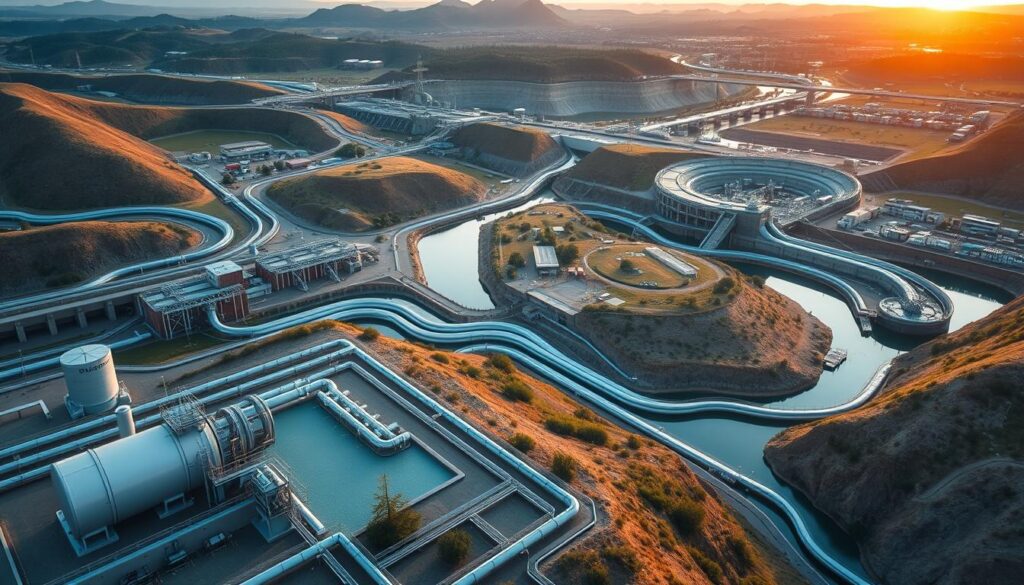
Compliance with regulations is paramount in the field of water and sanitation engineering, where engineers must navigate a complex landscape of federal, state, and international standards. Ensuring that water infrastructure design and environmental engineering services adhere to these regulations is crucial for public health and safety.
Importance of Compliance
Compliance with the regulatory framework is not just a legal necessity but also a critical factor in ensuring the sustainability and effectiveness of water and sanitation projects. Non-compliance can lead to severe consequences, including legal penalties, project delays, and increased costs. Moreover, compliance ensures that projects are designed and implemented with consideration for environmental impact and public health.
- Ensures adherence to safety and health standards
- Reduces the risk of legal and financial repercussions
- Promotes sustainable practices in water and sanitation engineering
Federal and State Regulations
In the United States, the regulatory framework for water and sanitation engineering is shaped by both federal and state regulations. At the federal level, agencies such as the Environmental Protection Agency (EPA) play a crucial role in setting standards and guidelines for water quality and wastewater treatment. For instance, the Clean Water Act and the Safe Drinking Water Act are pivotal pieces of legislation that govern water and sanitation practices. State regulations may further refine or add to these federal standards, making it essential for engineers to be aware of the specific regulations in their jurisdiction.
For more detailed information on federal regulations, engineers can refer to documents such as those found on the EPA’s website or specific guidelines like the WHO’s guidelines on water and sanitation.
International Standards and Guidelines
Beyond national borders, international standards and guidelines also play a significant role in shaping water and sanitation engineering practices. Organizations such as the World Health Organization (WHO) and the International Organization for Standardization (ISO) provide frameworks that can guide engineers in designing and implementing water and sanitation projects. These international standards can be particularly relevant for projects that involve cross-border collaborations or for countries looking to adopt best practices from around the world.
- WHO guidelines provide a comprehensive framework for water quality and sanitation
- ISO standards offer technical specifications for water and sanitation systems
- International cooperation and knowledge sharing can enhance project outcomes
Challenges Facing Water and Sanitation Engineers
Despite their critical work, water and sanitation engineers face significant hurdles, including aging infrastructure and climate change. These challenges complicate their mission to provide clean water and proper sanitation to communities worldwide.
Aging Infrastructure
One of the primary challenges is the aging infrastructure that characterizes many water and sanitation systems, particularly in developed countries. Deteriorating pipes and outdated treatment plants not only reduce the efficiency of water supply and wastewater treatment but also increase the risk of contamination and system failures.
Climate Change Impacts
Climate change poses another significant challenge, as changing weather patterns and rising temperatures affect water availability and quality. Increased frequency of extreme weather events, such as floods and droughts, can overwhelm existing infrastructure and disrupt water services, highlighting the need for resilient and adaptive urban sanitation solutions.
Funding and Resource Limitations
Furthermore, water and sanitation engineers often grapple with funding and resource limitations. Insufficient investment in water infrastructure can lead to inadequate wastewater treatment solutions, impacting public health and environmental sustainability. Securing funding and allocating resources effectively are crucial for maintaining and upgrading water and sanitation systems.
In conclusion, addressing the challenges faced by water and sanitation engineers requires a multifaceted approach that includes investing in infrastructure, developing innovative wastewater treatment solutions, and implementing effective urban sanitation strategies. By understanding these challenges, we can better support the critical work of these engineers.
Career Opportunities in Water and Sanitation Engineering
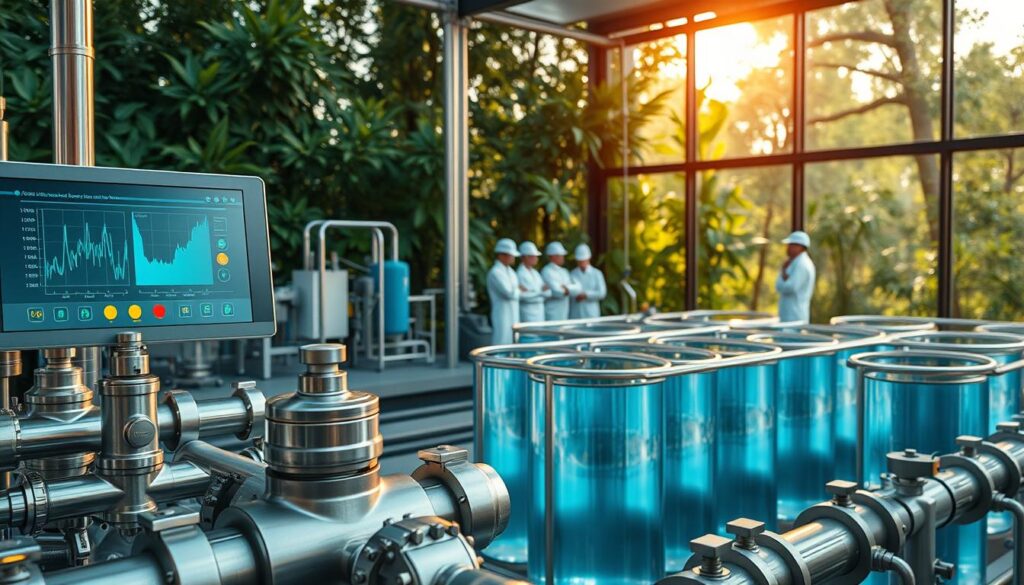
Professionals in water and sanitation engineering can explore multiple career avenues. The field is diverse, offering roles in various sectors that cater to different interests and skills.
Public Sector Roles
The public sector offers numerous opportunities for water and sanitation engineers. Government agencies at the local, state, and federal levels employ engineers to design and manage water supply systems, wastewater treatment plants, and other infrastructure crucial for public health.
Key Positions in the Public Sector:
- Water Resource Manager
- Wastewater Treatment Plant Operator
- Public Health Engineer
These roles involve implementing sustainable water management practices and ensuring compliance with environmental regulations.
Private Sector Opportunities
The private sector also provides a wide range of career opportunities for water and sanitation engineers. Private companies involved in water treatment, infrastructure development, and environmental consulting hire engineers to design and implement projects that improve water quality and availability.
| Company Type | Role Examples | Key Skills |
|---|---|---|
| Water Treatment Companies | Design Engineer, Project Manager | Knowledge of clean water technology, project management |
| Infrastructure Developers | Senior Engineer, Construction Manager | Experience with large-scale projects, team leadership |
| Environmental Consultants | Environmental Scientist, Engineer | Understanding of environmental regulations, impact assessment |
Roles in Non-Governmental Organizations
Non-governmental organizations (NGOs) focused on water, sanitation, and hygiene (WASH) initiatives also employ water and sanitation engineers. These roles often involve working on community development projects, advocating for policy changes, and implementing programs that improve access to clean water and sanitation.
Examples of NGO Roles:
- Program Manager for WASH initiatives
- Community Development Engineer
- Policy Advocate for water and sanitation issues
These positions require a deep understanding of sustainable water management and the ability to work effectively with communities and stakeholders.
Professional Organizations and Resources
Water and sanitation engineers can significantly benefit from joining professional organizations that offer resources and networking opportunities. These organizations provide a platform for engineers to stay updated on the latest technologies and best practices in the field.
American Society of Civil Engineers (ASCE)
The American Society of Civil Engineers (ASCE) is one of the most prominent professional organizations for civil engineers, including those specializing in water and sanitation engineering. ASCE offers numerous resources, including technical publications, conferences, and continuing education courses, that help engineers stay current in their field.
ASCE’s focus on environmental engineering services and water infrastructure design makes it an invaluable resource for professionals in this area. Members can access a wealth of information on the latest developments and innovations.
Water Environment Federation (WEF)
The Water Environment Federation (WEF) is another key organization that supports water and sanitation engineers. WEF is dedicated to preserving and enhancing the global water environment. It provides members with access to research, training programs, and networking events.
WEF’s work in promoting sustainable water management practices and innovative wastewater treatment technologies is particularly relevant to water and sanitation engineers. The organization’s resources help professionals address current challenges and develop future solutions.
Networking Opportunities
Both ASCE and WEF offer significant networking opportunities that are crucial for career development. Engineers can connect with peers, share knowledge, and collaborate on projects. These connections can lead to new opportunities and advancements in the field.
| Organization | Focus Area | Resources Offered |
|---|---|---|
| ASCE | Civil Engineering, including Water and Sanitation | Technical Publications, Conferences, Continuing Education |
| WEF | Water Environment and Wastewater Treatment | Research, Training Programs, Networking Events |
By engaging with these professional organizations, water and sanitation engineers can enhance their professional development, stay informed about industry advancements, and contribute to the improvement of water and sanitation systems globally.
Community Engagement and Education
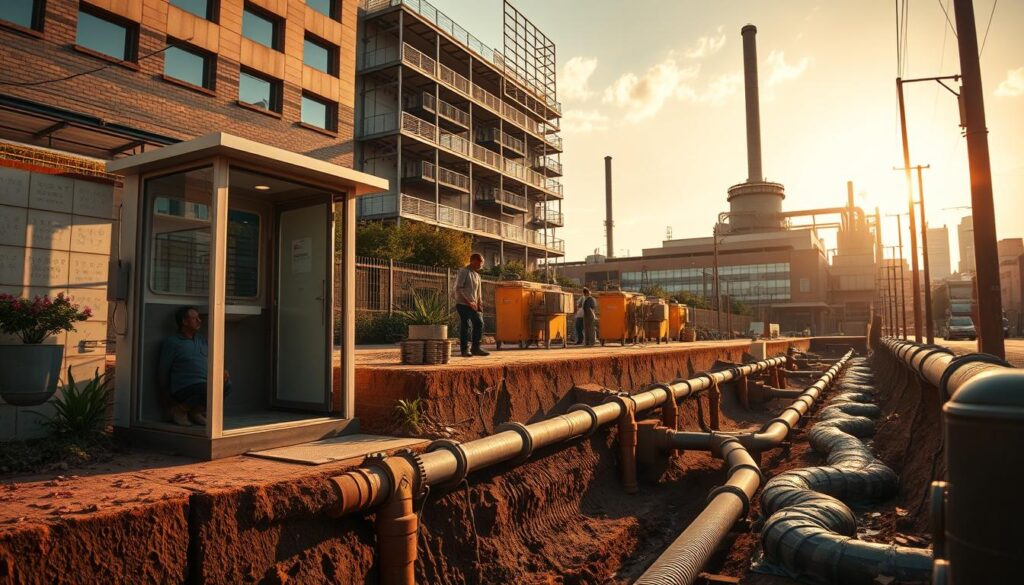
Community engagement and education are crucial for implementing sustainable urban sanitation solutions. Effective public outreach and education initiatives help in raising awareness about the importance of proper sanitation and water management practices.
Importance of Public Outreach
Public outreach is essential for the success of water and sanitation projects. It involves educating the community about the benefits and proper use of clean water technology. Outreach programs can be conducted through various channels, including:
- Community meetings
- School programs
- Public awareness campaigns
Developing Educational Programs
Developing educational programs tailored to different age groups and community segments is vital. These programs should focus on:
- Water conservation techniques
- Proper sanitation practices
- The importance of maintaining water infrastructure
By educating the public, communities can become more resilient to water-related challenges.
Collaborating with Local Governments
Collaboration with local governments is critical for the effective implementation of water and sanitation projects. This involves:
- Working together to develop policies that support sustainable water management
- Sharing resources and expertise to improve project outcomes
- Ensuring that projects are aligned with community needs and priorities
Such collaborations can lead to more sustainable and effective urban sanitation solutions.
Case Studies in Successful Engineering Projects
Real-world examples of successful water and sanitation engineering projects demonstrate best practices in the field. These case studies offer valuable insights into the challenges faced and the solutions implemented in various contexts.
Innovative Urban Water Solutions
Urban areas face unique challenges in water management due to high population densities and infrastructure demands. Innovative urban water solutions often involve advanced technologies such as smart water grids and efficient wastewater treatment systems. For instance, cities like Singapore have implemented comprehensive water management systems that include rainwater harvesting and wastewater recycling, significantly enhancing their water security.
Successful Rural Sanitation Initiatives
Rural sanitation initiatives require tailored approaches that consider local contexts and community needs. Successful projects often involve community-led total sanitation (CLTS) programs, which empower local populations to take ownership of their sanitation facilities. These initiatives not only improve public health but also contribute to environmental sustainability by reducing water pollution.
Crisis Management in Water Supply
Effective crisis management in water supply is critical for maintaining public health and safety during emergencies. This involves having robust contingency plans in place, including emergency water storage and distribution systems. For example, during natural disasters, having resilient water supply systems can be lifesaving. Engineers play a crucial role in designing these systems to withstand various crises.
The study of these case studies reveals that sustainable water management practices are essential for the long-term success of water and sanitation projects. By examining these examples, engineers and policymakers can gain insights into effective strategies for addressing water-related challenges. For more information on civil engineering in project management, visit World Civil Society.
Sustainable Practices in Water and Sanitation Engineering
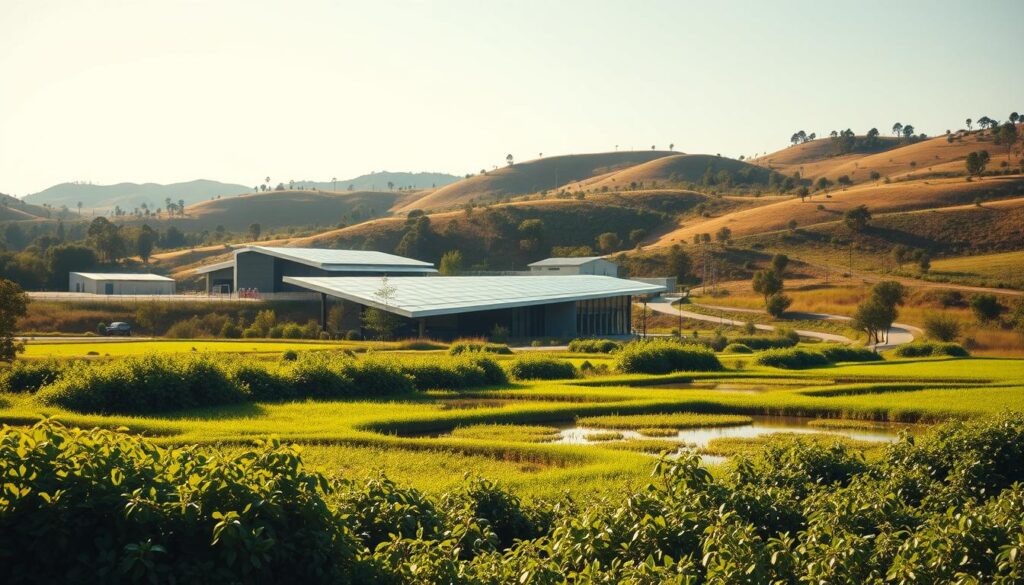
As the world grapples with water scarcity, sustainable practices in water and sanitation engineering are more important than ever. The need for innovative solutions that conserve resources while ensuring public health and safety has become a pressing concern globally.
Principles of Sustainable Design
Sustainable design in water and sanitation engineering involves adopting environmental engineering services that minimize environmental impact. This includes designing systems that are energy-efficient, use renewable resources, and reduce waste. For instance, incorporating green infrastructure such as wetlands or green roofs can significantly enhance water quality and reduce the burden on traditional infrastructure.
Resource Conservation Techniques
Resource conservation is a critical aspect of sustainable water and sanitation engineering. Techniques such as water recycling, rainwater harvesting, and efficient irrigation systems play a vital role in conserving water resources. Moreover, implementing water infrastructure design that optimizes water distribution and minimizes leakage is essential for sustainable water management.
| Technique | Description | Benefits |
|---|---|---|
| Water Recycling | Treatment and reuse of wastewater | Reduces water demand, decreases wastewater discharge |
| Rainwater Harvesting | Collection and storage of rainwater | Supplements water supply, reduces stormwater runoff |
| Efficient Irrigation | Use of technology to optimize water use in agriculture | Reduces water waste, improves crop yield |
Community-Led Initiatives
Community-led initiatives are pivotal in promoting sustainable practices in water and sanitation. By engaging local communities in the planning and implementation process, projects can be tailored to meet specific needs and ensure long-term sustainability. For more information on sustainable engineering solutions, visit https://worldcivilsociety.com/sustainable-engineering-solutions/.
These initiatives not only foster a sense of ownership among community members but also ensure that the solutions implemented are culturally appropriate and effective.
The Future of Water and Sanitation Engineering
Advancements in clean water technology and urban sanitation solutions are set to transform the future of water and sanitation engineering. As the global population continues to grow, the demand for effective and sustainable water management practices is becoming increasingly critical.
Emerging Trends and Technologies
The field is witnessing a significant shift towards innovative technologies that enhance efficiency and sustainability. Some of the emerging trends include:
- Advanced water recycling and reuse systems
- Integration of IoT and AI in water management
- Development of smart grids for water distribution
These technologies are not only improving the quality of water but also reducing the environmental footprint of water and sanitation systems.
Global Water Scarcity Challenges
One of the most pressing issues facing the future of water and sanitation engineering is global water scarcity. With climate change exacerbating water shortages, engineers are tasked with developing solutions that maximize water conservation and efficient use.
Strategies to address water scarcity include:
- Implementing water-saving technologies
- Promoting water reuse and recycling
- Developing policies for sustainable water management
Career Forecast and Job Market
The demand for skilled water and sanitation engineers is expected to rise as governments and private sectors invest in infrastructure and sustainable practices. Career opportunities will span across various sectors, including:
- Public utilities and government agencies
- Private engineering and construction firms
- Non-governmental organizations focused on water and sanitation
As the field evolves, professionals will need to stay abreast of the latest technologies and trends to remain competitive.
Conclusion: The Impact of Water and Sanitation Engineering
Water and sanitation engineering plays a vital role in ensuring the health and well-being of communities worldwide. The impact of this field is profound, with long-term benefits that include improved public health and environmental quality through sustainable water management practices.
Advancements in the Field
Engineers are developing innovative solutions to expand access to clean water, leveraging technologies such as desalination, water recycling, and decentralized water treatment. These advancements are crucial in regions where water is scarce or contaminated.
Building a Sustainable Future
To build a sustainable future, continued innovation and commitment from professionals in this field are necessary. This involves implementing environmental engineering services that prioritize resource conservation and community-led initiatives.
Joining the Effort
Aspiring engineers are encouraged to join this vital field, contributing to the development of affordable and scalable technologies that empower communities to take ownership of their water resources. By doing so, they will play a crucial role in shaping a more sustainable and equitable future for all.
